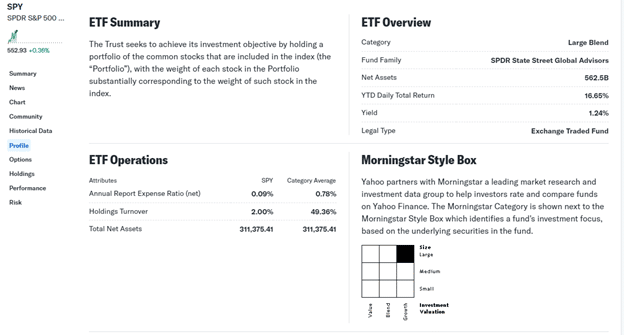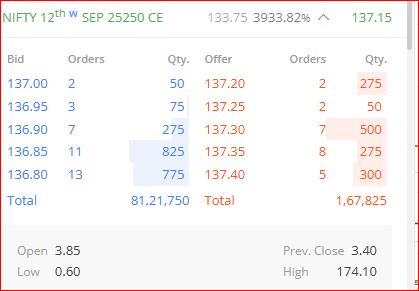Trade-traded funds (ETFs) are funding devices that mix some great benefits of mutual funds and the advantages of particular person shares.
They commerce on inventory exchanges, providing quite a lot of liquidity, ease of entry, and even potential optionability.
With over 2,000 ETFs within the U.S. market and whole property underneath administration within the trillions, they’ll provide an enormous benefit to the inverter and dealer.
ETFs additionally present tax advantages by their distinctive construction. H
owever, they carry dangers corresponding to market volatility and monitoring errors.
Understanding how they work, how they commerce, and potential tax implications is significant for making knowledgeable funding choices.
Let’s look deeper into what an ETF is, the way it trades, and if it’s best for you.
Contents
Trade-traded funds have surged in recognition not too long ago as a result of they’re versatile funding automobiles that may have a various vary of makes use of.
They are often categorized into numerous varieties, together with fairness, bond, commodity, and thematic ETFs.
Some examples of those embody the Spdr Gold ETF (GLD), the income-focused ones just like the Wheel technique ETF (WEEL) from Peerless or JP Morgan Lively Earnings ETF (JEPI), or they are often broadly market-focused just like the Spdr S&P ETF (SPY).
ETFs have a number of essential options, the primary being their cost-effectiveness.
ETFs usually provide decrease expense ratios than conventional mutual funds or different actively managed merchandise. Second is the publicity they supply.
ETFs permit smaller buyers to purchase into enormous baskets of shares or commodities with no need the capital to personal all underlying property within the right ratios.
Lastly, ETFs can present notable tax advantages on account of their distinctive construction and standing.
This may also help enhance after-tax returns and will be notably essential for older buyers seeking to create revenue in a tax-advantaged means.
As talked about above, ETFs usually permit the investor to purchase right into a basket of property that the fund supervisor manages.
For instance, the Spdr S&P500 ETF (SPY) permits an investor to purchase a fractional piece of all the corporations listed on the S&P 500 index in a accurately weighted trend.
The trade-off for this ease of use is that almost all funds cost an expense ratio payment.
Normally, it’s lower than 1% for actively managed ETFs and fewer than 0.1% for a lot of passive ETFs just like the SPY.
These expense ratios are essential to concentrate to as a result of, relying on the return of the ETF, they’ll eat loads into the potential revenue or add to a possible loss.
To seek out the expense ratio, lookup an ETF in a free software like Yahoo Finance and transfer to the profile web page.
Right here, you may see the Abstract, the Class, and most significantly, the Operations.
It will let you know the expense ratio and the way it compares to others in the identical ETF class.
Another helpful data right here is the Yield, Whole return (together with value appreciation), and the holdings turnover.
As with every thing in investing, there are all the time dangers related to an funding.
That is no completely different with ETFs.
One of many bigger dangers has to do with buying and selling an ETF.
Since they’re listed on an alternate, they’re affected by the identical elements as common shares.
One of many largest of those is liquidity.
Whereas common funds just like the SPY might have quite a lot of intraday buying and selling, making liquidity an afterthought, some funds like VanEcks Oil Providers (OIH) have loads much less intraday buying and selling quantity, making the power to enter and exit a place harder relying on dimension.
Monitoring errors is one other danger consideration.
An ETF’s efficiency might deviate barely from its benchmark, however there’s a potential danger that the underlying devices should not bought or bought within the right portions on the right time.
As an investor, this creates the likelihood that you’re now not buying and selling an instrument that mirrors your required publicity.
This danger is much less possible in passively managed funds, however it’s nonetheless price contemplating.
The final kind of danger related to an ETF is administration danger.
It is a pretty unusual danger, however much like monitoring errors, it’s one thing to pay attention to.
That is the chance that the administration of the ETF deviates from the said aim and begins to commerce in a way that doesn’t align with the prospectus.
This is also when administration will increase their expense payment and out of the blue begins charging extra for a similar fund.
One among these is extra critical than the opposite, however each are extremely unusual, given the quantity of oversight the SEC has on these devices.
Be part of the 5 Day Choices Buying and selling Bootcamp
Now that we have now a fundamental understanding of what an ETF is, the way it works, and a few of its related dangers, let’s break down the several types of ETFs in additional element.
The primary kind of ETF we’ll have a look at is the basket ETF.
That is an ETF that invests strictly in baskets of shares.
Most of these ETFs are often known as market basket or sector ETFs.
Examples of those embody the Spdr ETFs just like the SPY, OIH, and XLF.
These exist to provide publicity to sure market sectors and sometimes have decrease expense ratios as a result of they’re a extra passively managed fund.
Commodity ETFs are the following kind we will likely be , and because the title suggests, these contain an index that tracts a selected commodity or group of commodities.
GLD is likely one of the extra frequent, however virtually each commodity has its personal ETF.
The final kind of ETF is the Lively or Technique ETF.
These usually have a better expense ratio and a considerably greater asset turnover because of the lively nature of the underlying fund.
An instance right here can be both a Good Beta fund or an Earnings Fund.
Different examples embody the Yieldmax suite of ETFs and virtually any options-based ETF.
Every kind of ETF has a selected operate and, when mixed, can type a well-rounded portfolio that helps obtain virtually any aim.
Taxes are the place virtually everybody seems to be for any benefit they’ll discover, and investing isn’t any completely different.
As mentioned above, it is a enormous benefit for ETFs in that, relying on the asset turnover, the dividends will be taxed at a decrease price.
These dividends are referred to as Certified dividends and, within the U.S., are taxed at a price of 0%-20% relying on the revenue bracket.
If a dividend will not be certified, corresponding to an actively managed fund, then its revenue is taxed at your abnormal tax price.
Along with how the fund holds its securities, listed below are another factors to concentrate to involving the tax remedy of an ETF dividend:
Web Funding Earnings Tax: Excessive-income earners could also be topic to an extra 3.8% tax on funding revenue, together with dividends
Dividend Supply: The tax remedy usually will depend on the underlying holdings of the ETF:
Dividends from shares held by the ETF typically movement by as certified dividends (if holding interval necessities are met)
Curiosity from bonds held by the ETF is usually handled as abnormal dividends
ETF Supplier Reporting: Your ETF supplier will specify which sort of dividends you acquired in your Type 1099-DIV
International Dividends: Dividends from international investments could also be topic to completely different tax remedy and potential international tax withholding
Trade-traded Funds (ETFs) provide a flexible and environment friendly technique to acquire publicity to a variety of asset lessons whereas benefiting from liquidity, diversification, and potential tax benefits.
Nonetheless, like all funding, they aren’t with out dangers, starting from liquidity issues on lesser-known ETFs and monitoring errors to administration deviations.
By understanding how ETFs operate, the kinds obtainable, and the tax implications, buyers can strategically incorporate these automobiles into their portfolios to fulfill particular monetary objectives.
Whether or not looking for broad market publicity, focused sector performs, or revenue technology, ETFs present a versatile toolset for long-term buyers and lively merchants.
As with every funding, cautious analysis and due diligence are important to maximizing the advantages whereas minimizing the dangers inherent to those monetary devices.
We hope you loved this information to ETFs.
When you’ve got any questions, please ship an e-mail or depart a remark under.
Commerce secure!
Disclaimer: The knowledge above is for academic functions solely and shouldn’t be handled as funding recommendation. The technique offered wouldn’t be appropriate for buyers who should not aware of alternate traded choices. Any readers on this technique ought to do their very own analysis and search recommendation from a licensed monetary adviser.
















